- عنوان کتاب: AI and Electoral Campaigns
- نویسنده: Rafael Rubio Núñez
- حوزه: کاربرد هوش مصنوعی, انتخابات
- سال انتشار: 2026
- تعداد صفحه: 279
- زبان اصلی: انگلیسی
- نوع فایل: pdf
- حجم فایل: 1.29 مگابایت
شتاب فناوری، ظهور شبکههای اجتماعی، دادهکاوی و خودکارسازی فرآیندهای خلاقانه در قالبهای مختلف، همگی منجر به مجازیسازی فزاینده واقعیت، به «دیجیتالی شدن مکالمات عمومی» میشوند (Innerarity; Colomina 2020, p. 11). در قلمرو منازعات نمادینی که در این برهه از قرن بیست و یکم بر سیاست غالب هستند، این پدیدهها تأثیر شدیدی بر رفتار سازمانها، احزاب سیاسی، نامزدها و فعالان داشتهاند و نه تنها سیاست، بلکه جامعه را نیز به طور گستردهتری از طریق «غیرانسانیسازی» سریع وظایف و فرآیندهای حساس اجتماعی متحول کردهاند. مبارزات انتخاباتی، که در ابتدا مبتنی بر تماسهای مستقیم بین فردی (در قرن نوزدهم و اوایل قرن بیستم)، رسانههای جمعی به عنوان واسطه (از اواسط قرن بیستم تا اوایل قرن بیستم) و بر اساس ویژگی چند پلتفرمی دیجیتالی شدن (امروزه) بودند، علیرغم تحولات در رسانههای اجتماعی-فنی، رفتار انسانی را به عنوان منبع اصلی کنش خود حفظ کردهاند. در این زمینه، تلاش برای کسب آرا مبتنی بر استراتژیهایی بود که با پشتیبانی لجستیکی از تکنیکهای موجود در هر لحظه، طراحی و اجرا میشدند و به کسانی که نوآوری فنی استراتژیک آنها از رقبایشان پیشی میگرفت، مزیت رقابتی میداد. به عنوان مثال، ظهور فناوری اطلاعات از اولین کمپین انتخاباتی رونالد ریگان در سال ۱۹۸۰ به بعد، منجر به ظهور مجموعهای از پدیدهها در عرصه سیاسی، مانند صفحات وب (۲۰۰۰)، جلسات ملاقات (۲۰۰۴)، شبکههای اجتماعی (۲۰۰۸)، تقسیمبندی خرد (۲۰۱۲) و کمپینهای دادهمحور در سال ۲۰۱۶ شد که استفاده از آنها به سرعت به یک هنجار تبدیل شد. با این حال، پیشرفت هوش مصنوعی (AI) آغاز یک تحول جدید و اجتنابناپذیر در پویایی رقابتهای انتخاباتی را نوید میدهد. در این زمینه، نوسازی و گسترش متعاقب امکانات ارتباطی، از مرحله تولید تا انتشار، امکان جمعآوری دادهها در مورد رفتار رأیدهندگان و استفاده از آن برای ایجاد پیامهای شخصیسازی شده و همچنین تسهیل انتشار پیامهای خودکار با پتانسیل عظیم برای دستکاری مصنوعی مناظرات عمومی را فراهم میکند. علاوه بر این، استفاده از هوش مصنوعی این ظرفیت را دارد که هم بر بازار اطلاعات و هم بر فضای روابط اجتماعی تأثیر منفی بگذارد، حتی تا آنجا پیش میرود که «حقایق» ظاهراً واقعی را در بازنماییهای فراواقعگرایانه از افراد و رویدادها ایجاد میکند، که با درجهای از پیچیدگی تصور میشوند که به طور فزایندهای از مهارت یک حقهباز معمولی فراتر میرود،2 و از تکنیکهای اقناعی استفاده میکنند که «در گذشته غیرقابل تصور» بودند و به توانایی جمعی ما در درک واقعیت آسیب میرسانند (Schick, 2020, p. 30). علاوه بر این، این فناوریها به احزاب سیاسی و نامزدها فرصتهایی برای درک بهتر واقعیت، توسعه استراتژیهای پیچیده و بهینهسازی ارتباط خود با رأیدهندگان میدهند. از سوی دیگر، آنها همچنین امکان افزایش ظرفیتهای نهادی نهادهای انتخاباتی را فراهم میکنند، به عنوان مثال، در زمینههای بهبود روابط با جامعه، سازماندهی لجستیکی فرآیندها، بهروزرسانی فهرستهای انتخاباتی، شناسایی رأیدهندگان، تشخیص اطلاعات نادرست از طریق شنود اجتماعی و نظارت بر شبکه، و ایجاد استراتژیهای ارتباطی برای انتشار محتوا، با استفاده از «گفتمان متقابل» به عنوان «تاکتیک مبارزه» (پرادو، 2022، ص 51).
Technological acceleration, the rise of social networks, data mining, and the automation of creative processes in different formats all lead to a progressive virtualization of reality, to the “digitalization of public conversations” (Innerarity; Colomina 2020, p. 11). Within the realm of the symbolic conflicts that dominate politics at this point in the twenty-first century, these phenomena have had an intense impact on the behavior of organizations, political parties, candidates, and activists, transforming not only politics but also society more broadly through the accelerated “dehumanization” of sensitive social tasks and processes. Electoral campaigns, originally based on direct interpersonal contacts (in the nineteenth and early twentieth centuries), on mass media as the intermediary (from the mid-twentieth to the early twentieth centuries), and on the multi-platform modality characteristic of digitalization (present day), have retained human behavior as their main source of action, despite transformations in the sociotechnical media. In this context, the quest for votes was based on strategies conceived and executed with the logistical support of the techniques available at any given moment, giving a competitive advantage to those whose strategic technical innovation surpassed that of their opponents. For example, the emergence of information technology from Ronald Reagan’s first election campaign in 1980 onwards gave rise to a series of phenomena in the political arena, such as web pages (2000), meetups (2004), social networks (2008), micro-segmentation (2012), and data-driven campaigns in 2016, whose use rapidly became the norm. However, the advance of artificial intelligence (AI) heralds the start of a new and inevitable transformation in the dynamics of electoral contests. In this context, the modernization and consequent expansion of communication possibilities, from the production to the dissemination phase, makes it possible to collect data on voter behavior and use this to create personalized messages as well as facilitate the dissemination of automated messages with an enormous potential to artificially manipulate public debate. In addition, the use of AI has the capacity to exert a negative influence both on the information market and on the climate of social relations, even going so far as to create apparently real “facts” embedded in ultrarealistic representations of people and events, which are conceived with a degree of sophistication that increasingly surpasses the savoir-faire of the average hoaxer,2 and which use persuasion techniques that were “unthinkable in the past” and damage our collective ability to understand reality (Schick, 2020, p. 30). Furthermore, these technologies provide political parties and candidates with opportunities to gain a better understanding of reality, develop sophisticated strategies, and optimize their communication with voters. On the other hand, they also enable an increase in the institutional capacities of electoral bodies, for example, in the fields of improving relations with society, the logistical organization of processes, the updating of electoral registers, voter identification, the detection of disinformation through social listening and network monitoring, and the construction of communication strategies to disseminate content, using “counter-discourse” as a “combat tactic” (Prado, 2022, p. 51).
این کتاب را میتوانید از لینک زیر بصورت رایگان دانلود کنید:
Download: AI and Electoral Campaigns





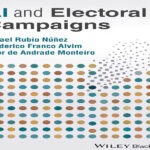
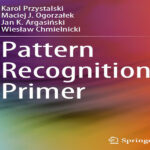

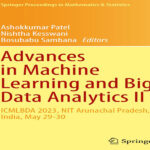
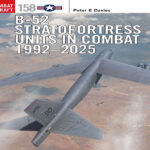
























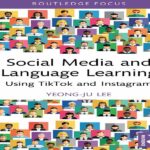

نظرات کاربران